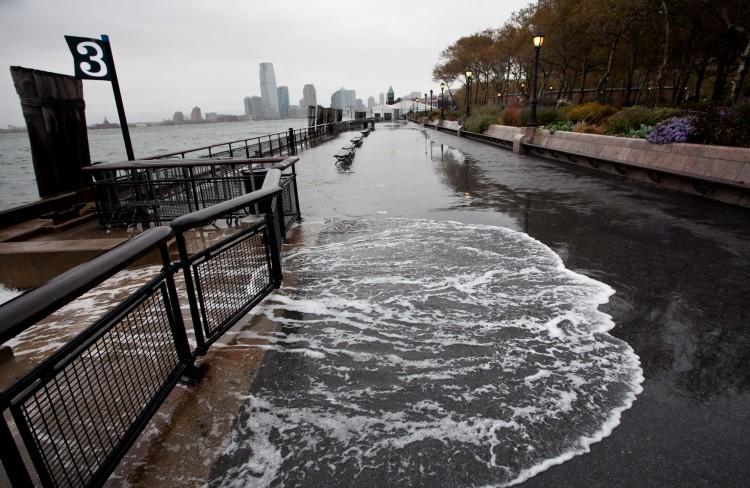NEW YORK—With seas estimated to rise 12 to 23 inches by 2080 and storms predicted to get more intense, cities around America have been exploring what is called managed coastal retreats. It’s a method that sets up planned measures to reduce the amount of development or redevelopment in highly vulnerable coastal areas.
In New York City, the plan to mitigate damage for future flooding has centered on buying out or elevating homes that were flooded by Sandy. Gov. Andrew Cuomo has proposed $400 million for home buyouts, the least controversial way to inhibit development. But it is also one of the most costly.
Another problem: experts at the Columbia Center for Climate Change Law (CCCL) estimate that of 10,000 homes in question, only 1,300 would be covered under the governor’s buyout program.
“It is extremely expensive to buy homes at their pre-disaster fair market value,” said Michael Gerrard, director of the CCCL at Columbia University during a March 28 panel. “It does not do much to reduce damage from the next great storm, which could follow a different track or otherwise behave differently and therefore wipe out other neighborhoods.”
J. Peter Byrne, associate dean in the J.D. Program at Georgetown Law, notes that regulation through downzoning can “achieve retreat.” Downzoning involves making bigger lots of land to allow buildings to be constructed farther back on the land, which leaves more space for storms.
Recommended: No Housing Recovery for NYC Sandy Victims Until June
“It is not going to stop development, but it will limit the number of people who are in harm’s way,” Byrne said.
He added that there have been some areas outside of New York that allow rebuilding immediately after a disaster, however homeowners are not allowed to rebuild a second time if their houses are destroyed again.
Then there is the method of armoring against storm swells.
“As the sea rises, owners will be tempted to build various barriers to protect themselves,” Byrne said. “If they can’t, then the seas will rise and over time it is not going to be viable to maintain the property and it will go back into a natural state.”
With sea levels rising, some cities have put laws in place prohibiting the practice as a way to force homeowners to eventually leave.
In California, property owners can get a conditional permit for new construction, on the condition that they give up the right to armor their property.
Some cities that have grown tired of rebuilding washed-out roads destroyed by storms have the option of not rebuilding the roads.
The method makes it harder on residents, forcing some to leave.
Byrne said his suggestions avoid the legal trapping of a taking (when the government takes your property), but overcoming many of the political and practical challenges will be difficult.
As of January, 62,000 households had damage from the storm, according to a Ferman Center brief released in March.





